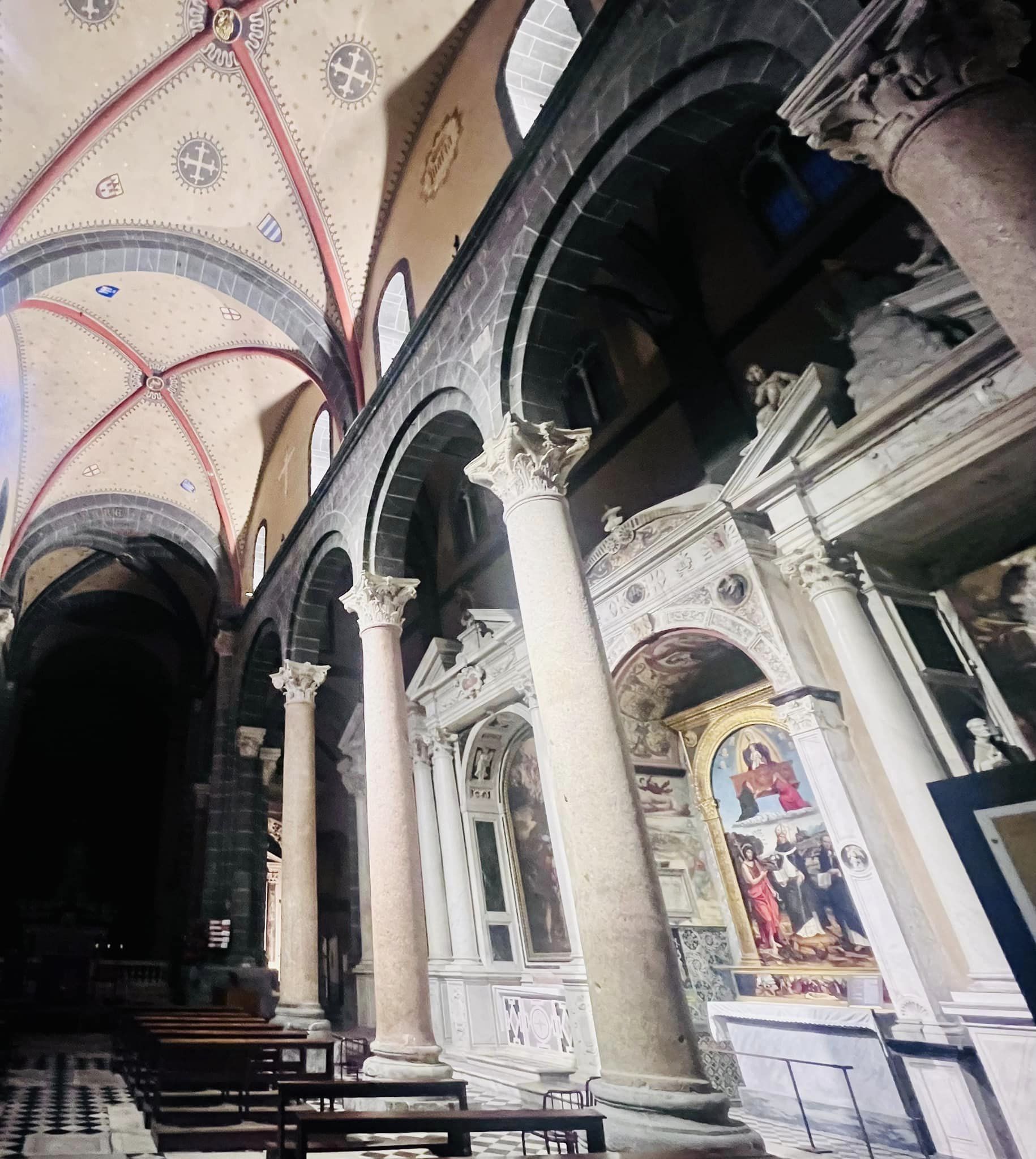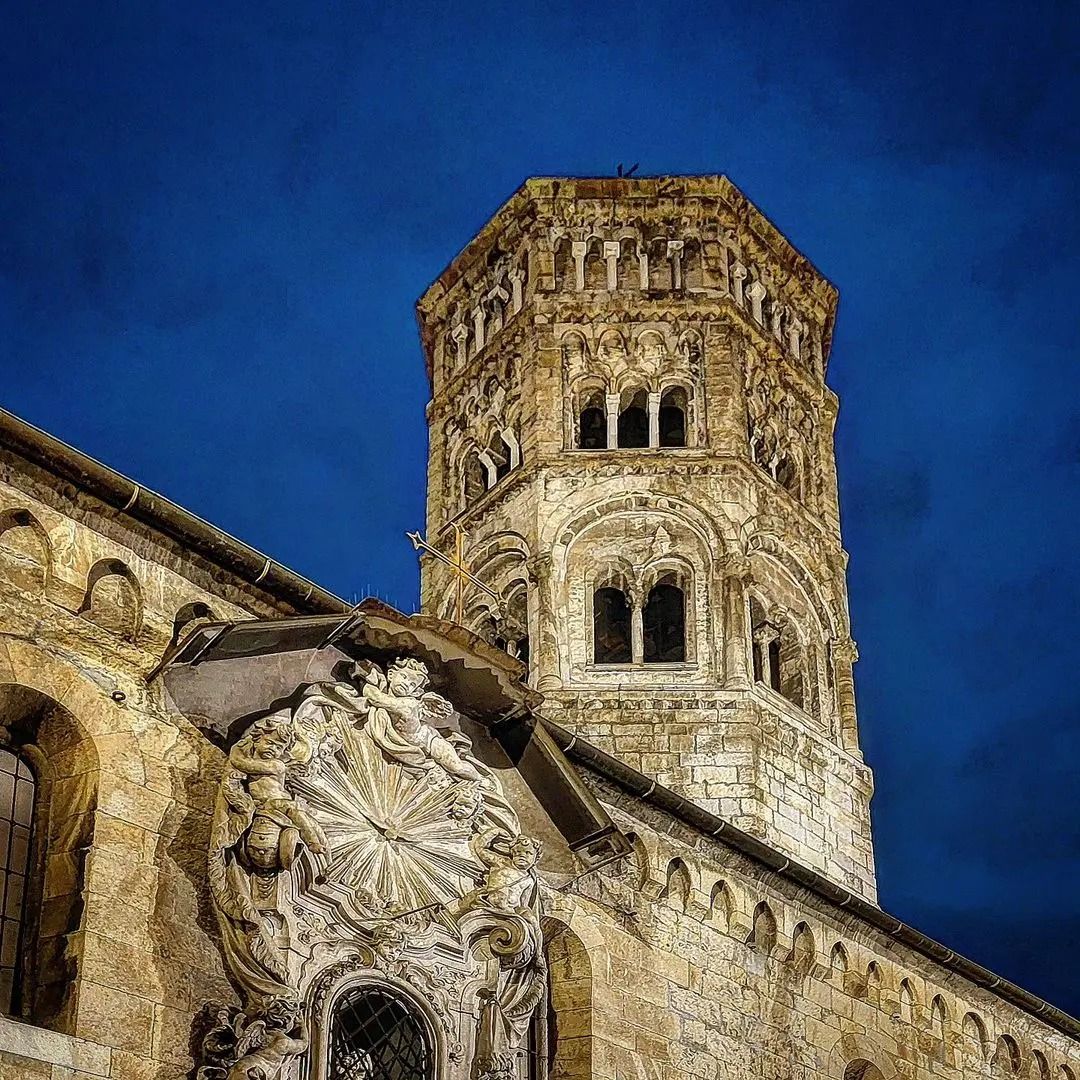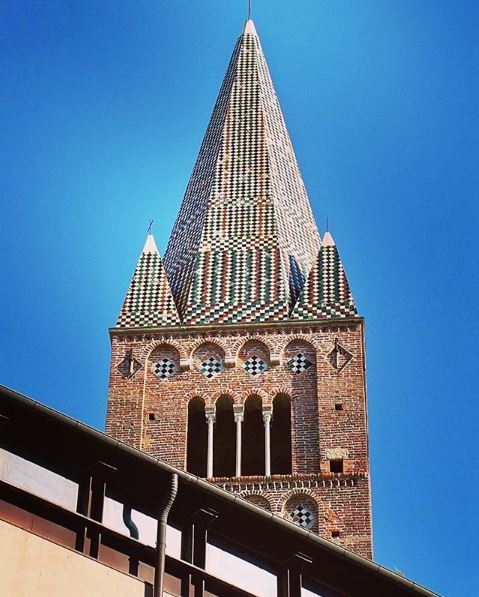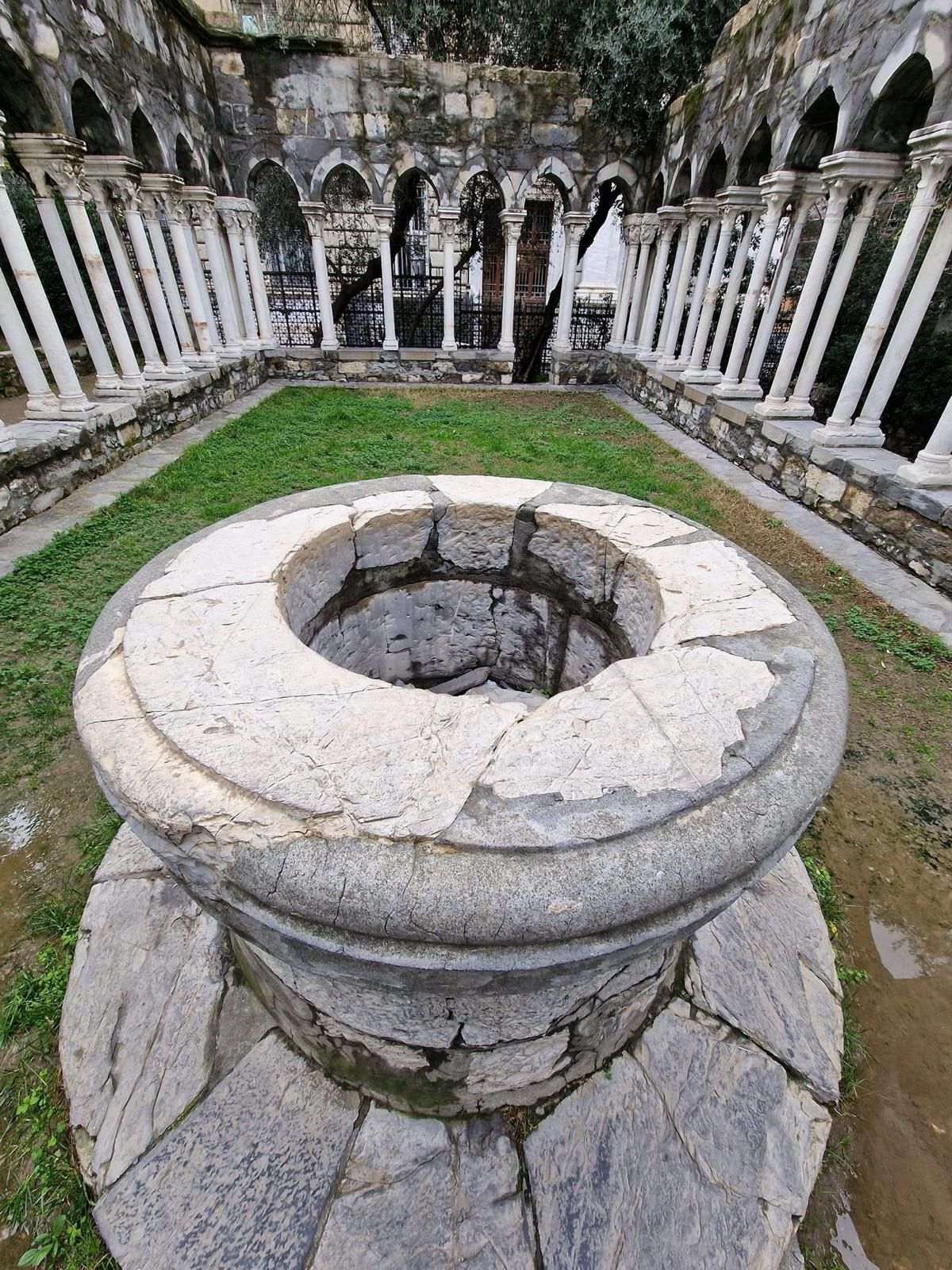The Six Landmarks of Genoa in the Middle Ages
Genoa was one of the European capitals of the Middle Ages; a port city, dominating the Mediterranean between the time of the First Crusade and the end of the thirteenth century. It is a fascinating and complex story that can be read in history books or discovered by walking through the city...
Medieval Genoa
The stages
Santa Maria di Castello and the Embriaci TowerCampo Pisano
San Donato
Sant’Agostino Museum
Porta Soprana and Porta di Vacca
Casa di Colombo and Chiostro di Sant’Andrea

Santa Maria di Castello and the Embriaci Tower
The essential starting point to understand medieval Genoa is this ancient church, which stands on the hill in the historic center. Santa Maria di Castello, located in the oldest part of the city, is a Romanesque Basilica, built on the site of the city's first settlement, just above the natural shelter of the old port's coastline. The church's facade and bell tower testify to the Romanesque architecture, influenced by the masters from Antelami, builders and stone carvers from Lombardy. The church is a treasure trove of art with frescoes and paintings by Bernardo Castello, Aurelio Lomi, Grechetto, Domenico Piola, Luciano Borzone, Giovanni and Giovan Battista Carlone, Andrea Semino, Giovan Battista Paggi; as well as sculptures and reliefs, including works by Leonardo Riccomanno, Filippo and Anton Domenico Parodi. The masterpiece is the Annunciation by Giusto da Ravensburg. Just a stone's throw away stands the Embriaci Tower, named after Guglielmo "Testa di Maglio," conqueror of Jerusalem and Caesarea in the 11th century during the First Crusade.

Campo Pisano
"Ah, Genoese, men of different customs and full of every vice, why are you not scattered from the world?" wrote Dante in the 33rd Canto of the Inferno. And certainly, this sharp description by the supreme poet fits well with the story of Campo Pisano, a beautiful and tragic place in the city's history. Here, in the summer of 1284, after Genoa's victory over Pisa in the famous naval battle of Meloria, thousands of Pisan prisoners were brought: they were abandoned and left to die of hunger under the walls. This tragic story gives its name to this square, one of the most beautiful and medieval in the city. To admire the fantastic and recently restored "risseu," the pavement made of stone (risseu, in Italian, could be translated as stone mosaic) which is an important part of the urban landscape and the history of Liguria itself. Because the art of stone mosaic is entirely Ligurian, made with sea stones: "The stone breaks off from the mountain rock, is dragged by the river, which polishes it. It arrives on the beach and the sea completes the final modification" – described already by Virgil, the real one not the Dantean one.

San Donato
Miracle in the alleys. It could be the title of a book dedicated to the church of San Donato, just a few steps from the center of Genoa; yet, for many years forgotten by tourist flows and the attention of Genoese themselves. Today, the splendid almost certainly millennial building can be considered the symbol of the revival of the historic center. The church has been perfectly restored, and in a few years, two masterpieces have been brought to light: Joos Van Cleve's triptych "Adoration of the Magi" and Jean de Troy's "Madonna del Suffragio," which has always been remembered by Genoese faithful as the Painting of the Souls. The current structure of the church is the result of an expansion and reconstruction in the twelfth century of a pre-existing religious building from the year one thousand. It is difficult to say when the cult of San Donato, bishop of Arezzo and martyr who died in 362 during the persecution of Julian the Apostate, arrived in Genoa. Certainly, the memory and veneration of this saint spread thanks to the writings of Gregory the Great and Pope Gelasius. On the facade, one can notice the lintel of Roman origin, on which from 1290 to 1862 (the year of the annexation of Tuscany to the Kingdom of Italy) hung the chains of the port of Pisa, destroyed and buried by the Genoese after the Battle of Meloria.

Sant’Agostino Museum
Founded by the Augustinian Order and dedicated to Santa Tecla in 1260, Sant'Agostino is one of the rare Gothic churches to have survived the destruction of ecclesiastical buildings during that period. It was built with humble materials, using marble and cut stone for the facade, in the tall columns with cubic capitals, and in some decorations. In the 14th and 15th centuries, the complex underwent a second phase of construction, during which the lateral trusses were demolished, the perimeter walls were raised by bricking up the single windows, and the choir was expanded. After its suppression in 1798, the abandonment of the large complex, consisting of a triangular cloister and a quadrangular one, suggested its conversion into a sculpture museum: the Sant'Agostino Museum, currently undergoing restoration with plans to reopen in 2024. Here, one can observe sculptures, detached Italian and Ligurian frescoes, stone artifacts from the 10th to the 17th century; works by Pisano, Canova, Puget, Parodi, Schiaffino, Cambiaso, Castello, and Piola: yet another treasure trove that makes the city unique. Also worth seeing in the medieval Piazza Sarzano is the fountain placed inside a temple with six columns, a work by Bartolomeo Bianco, completed with the bust of Janus attributed to one of the artists from the Della Porta family.

Porta Soprana and Porta di Vacca
Porta Soprana, or Sant'Andrea, with its slender towers, is one of the symbols of the city of Genoa. Located at the top of Piano di Sant'Andrea, which gives it its name, it was erected in the 9th century AD and modified in the years leading up to 1155, during the construction of the new city wall known as the "Barbarossa." Originally the main entrance to the city, today it represents one of the gates that introduces tourists to the historic center of the Superb. Here resides the city's most famous ghost: the old woman of Vico dei Librai, who first appeared on the morning of December 29, 1989. Since then, always on Christmas holidays, the old woman of Vico dei Librai, an ancient street that no longer exists since the late sixties, has appeared at least fifteen times. She is certainly the most famous ghost in the city. Another famous medieval gate is Porta di Vacca. The ancient gate of San Fede, which in the 12th century was the entrance on the western side of the ancient city wall built between 1155 and 1159 to defend the city. The gate consists of a pointed arch flanked by two towers, partially incorporated into the surrounding buildings since the late 1700s. This is where one enters Via del Campo, the street immortalized by Fabrizio De André.

Casa di Colombo and Chiostro di Sant’Andrea
In the heart of the city, in Piazza Dante, in the shadow of the Towers of Porta Soprana, lies the house where a young Christopher Columbus lived when he was between four and nine years old: it is a small but rich memorial dedicated to the most important explorer in history. It is probably a reconstruction, dating back to the 18th century, of the original medieval building where the discoverer of the Americas lived in his youth. The house was likely destroyed during the bombardment of the French fleet of King Louis XIV, which hit Genoa in 1684. According to written sources, the navigator lived here between approximately 1455 and 1470. Just a stone's throw away is the cloister of Sant'Andrea, which was once part of the monastery of the same name, later demolished. The sculpted capitals depict scenes inspired by various themes from the Old and New Testaments, such as Adam and Eve, the Flight into Egypt, Daniel in the lion's den, and the Journey of the Magi. Other capitals show more generic depictions of animals and monstrous creatures. The authors of this series of capitals are probably from Lombard-Emilian backgrounds.
You might also be interested in
Prova ad ampliare i tuoi criteri di ricerca oppure contattaci per una proposta personalizzata.



